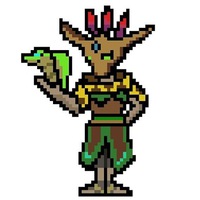
Почему Толстой не даёт Соне Ростовой право на счастье? Почему он оставляет её одну, без собственной
семьи? 0
0
 0
0
Ответы на вопрос
 Внимание! Ответы на вопросы дают живые люди. Они могут содержать ошибочную информацию, заблуждения, а также ответы могут быть сгенерированы нейросетями. Будьте внимательны. Если вы уверены, что ответ неверный, нажмите кнопку "Пожаловаться" под ответом.
Внимание! Ответы на вопросы дают живые люди. Они могут содержать ошибочную информацию, заблуждения, а также ответы могут быть сгенерированы нейросетями. Будьте внимательны. Если вы уверены, что ответ неверный, нажмите кнопку "Пожаловаться" под ответом.

 0
0
 0
0

Why doesn't Tolstoy give Sonya Rostova the right to happiness? Why does he leave her alone, without her own family?
In Leo Tolstoy's novel "War and Peace," Sonya Rostova is a complex and tragic character who faces numerous challenges and obstacles throughout the story. While Tolstoy does not explicitly give Sonya the right to happiness or a family of her own, there are several factors that contribute to this outcome.
1. Social Class and Expectations: One of the main reasons why Tolstoy does not give Sonya the right to happiness is the social class divide between her and the other characters. Sonya is from a lower social class compared to the aristocratic Rostov family, and this difference in status creates barriers to her happiness and fulfillment. In the society depicted in the novel, social class plays a significant role in determining one's opportunities and prospects for a happy life.
2. Duty and Sacrifice: Sonya is portrayed as a selfless and devoted character who prioritizes the well-being and happiness of others over her own. She is deeply in love with Nikolai Rostov, but when he decides to marry someone else for financial reasons, Sonya sacrifices her own happiness for the sake of the Rostov family's welfare. She remains loyal to the family and takes on the role of a caregiver and support system, even though it means suppressing her own desires and dreams.
3. Themes of Fate and Determinism: Tolstoy explores the themes of fate and determinism throughout the novel, suggesting that individuals have limited control over their own destinies. Sonya's fate is intertwined with the choices and actions of other characters, particularly Nikolai and Natasha Rostov. Tolstoy portrays Sonya as a victim of circumstances, highlighting the constraints imposed on her by societal norms and expectations.
4. Symbolism and Contrast: Sonya's character serves as a contrast to other female characters in the novel, such as Natasha Rostova. While Natasha is portrayed as a vibrant and free-spirited character who finds love and happiness, Sonya represents the sacrifices and limitations faced by women in society. Her character symbolizes the struggles and hardships endured by individuals who do not conform to societal norms or who are bound by duty and obligation.
It is important to note that these interpretations are based on the analysis of the novel and may vary depending on individual perspectives. Tolstoy's portrayal of Sonya Rostova reflects the social and cultural context of the time and explores themes of love, duty, sacrifice, and the limitations imposed by society.
 0
0
 0
0
Топ вопросов за вчера в категории Литература
Последние заданные вопросы в категории Литература
-
Математика
-
Литература
-
Алгебра
-
Русский язык
-
Геометрия
-
Английский язык
-
Химия
-
Физика
-
Биология
-
Другие предметы
-
История
-
Обществознание
-
Окружающий мир
-
География
-
Українська мова
-
Информатика
-
Українська література
-
Қазақ тiлi
-
Экономика
-
Музыка
-
Право
-
Беларуская мова
-
Французский язык
-
Немецкий язык
-
МХК
-
ОБЖ
-
Психология
-
Физкультура и спорт
-
Астрономия
-
Кыргыз тили
-
Оʻzbek tili





















